Curiosity blooms fast in the Arizona sun, especially when a beloved hideaway goes dark without warning. Travelers once arrived to find locked gates, lights out, and an uncanny silence hanging over the Bradshaw Mountains.
Castle Hot Springs, one of Arizona’s most storied resorts, had vanished from the vacation map almost overnight. Locals whispered, road-trippers detoured, and rumors traveled faster than the desert wind.
The mystery of its sudden closure became part of state folklore, a reminder that even paradise can slip quietly into stillness.
This story explores how a century-old resort could vanish in plain sight and still leave its mark on Arizona’s landscape and memory.
A Gilded Beginning
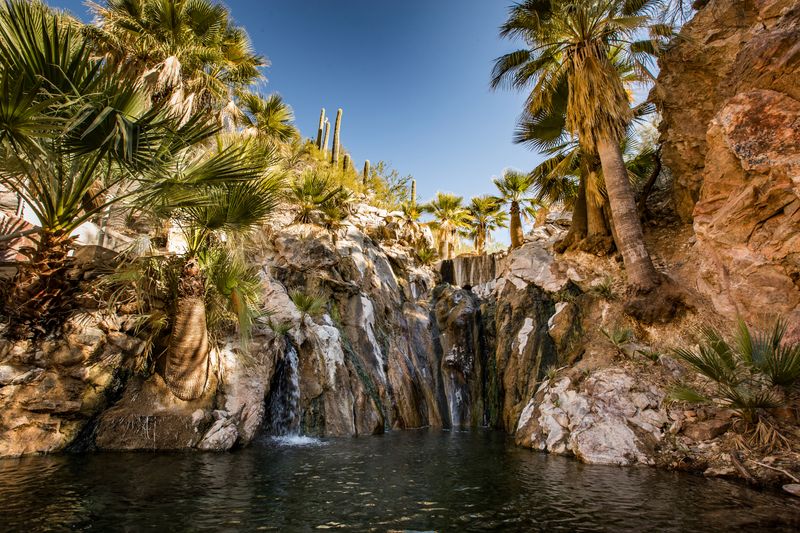
Castle Hot Springs began as a dream built in stone and steam. Discovered in the late 1800s, its natural mineral springs became a retreat for health seekers and high society alike.
Wealthy families and political figures came to escape winter and restore themselves under the desert sun. The property was a marvel of architecture, combining rugged terrain with refined comfort.
Surrounded by towering palms and rugged cliffs, it offered serenity that felt almost sacred. Each suite opened to sweeping canyon views, and at night, guests soaked beneath skies blazing with stars.
By the early 20th century, Castle Hot Springs had become one of the most exclusive destinations in the American Southwest, promising wellness and privacy in equal measure.
Its success seemed unshakable, and for decades, the resort thrived as a beacon of Arizona luxury.
A Sudden End to the Era
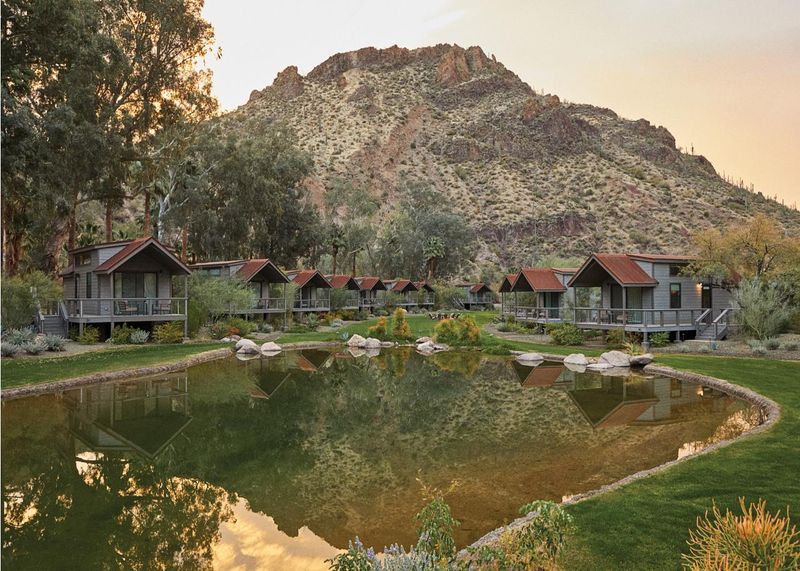
Then, without warning, the rhythm stopped. In the 1970s, a fire swept through the property, destroying much of its main lodge and ending operations abruptly.
Guests were evacuated, staff dispersed, and the once-bustling retreat went silent. The mineral waters continued to flow, but the laughter, music, and clinking dinnerware were gone.
For years, the ruins stood untouched, a haunting symbol of what had been. Arizona’s desert reclaimed the paths where carriages once rolled and wildflowers began to sprout through the cracks of old foundations.
Locals spoke of the closure with disbelief, remembering how quickly the lights went out. Castle Hot Springs faded into memory, leaving behind echoes of its grandeur and the lingering scent of smoke in the canyons.
What had been a cornerstone of Arizona’s hospitality vanished in a single season.
“Closed Overnight” as Cultural Whiplash
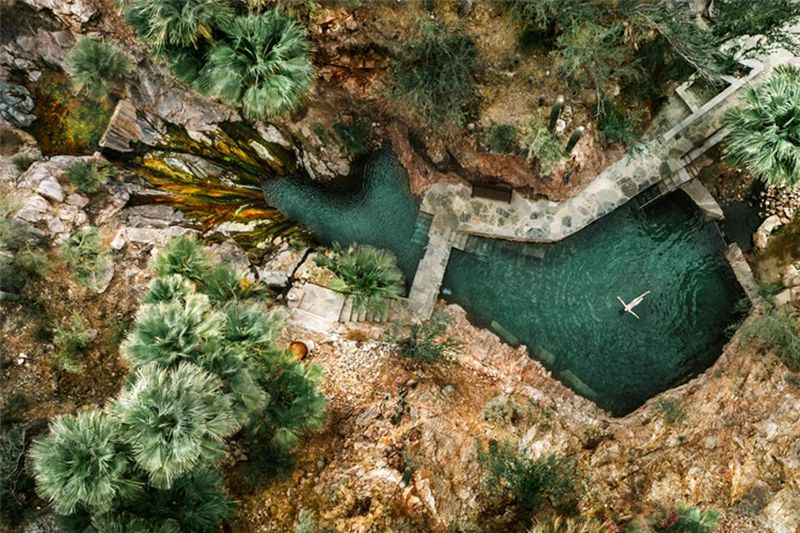
For a community used to the steady pulse of tourism, Castle Hot Springs’ sudden silence was shocking. One day it was a thriving resort filled with life, and the next, it was an abandoned oasis.
The phrase “closed overnight” captured the collective disbelief, not the literal timing. People in nearby towns compared it to a mirage that had evaporated.
The resort’s closure rippled beyond Morristown, affecting workers, suppliers, and travelers who had planned their yearly retreats there.
Over time, stories began to replace facts. Some claimed the land was cursed, others swore they had seen lights flicker in the empty windows.
In truth, the fire and financial strain had made rebuilding impossible for decades. The desert, however, doesn’t erase history. It preserves it quietly under layers of sand and sunlight, waiting for rediscovery.
Why the Abruptness Felt Final
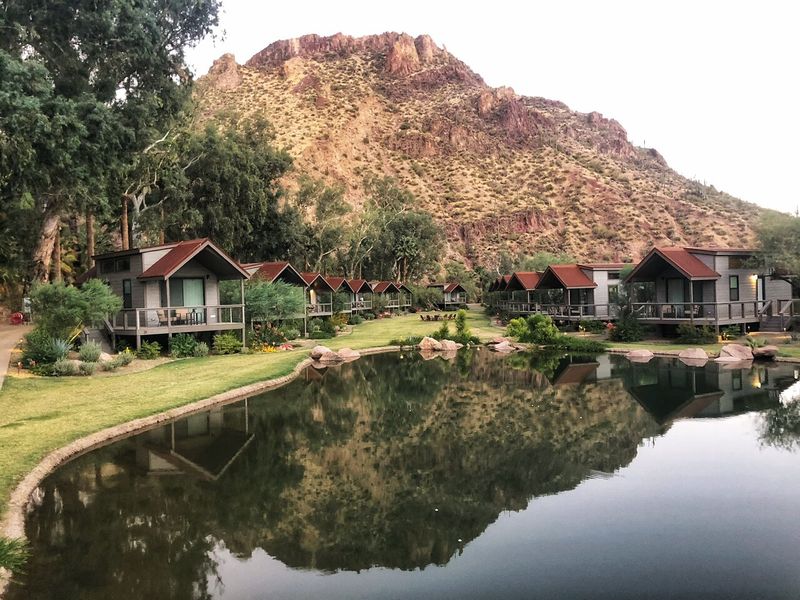
Rebuilding a luxury retreat deep in the Bradshaw Mountains was no easy task. Roads were rough, access limited, and investors hesitant to commit to a property so remote.
The resort’s isolation, once its charm, had become its obstacle. As the years passed, the silence around Castle Hot Springs grew heavier. Nearby towns moved on, and travelers looked elsewhere for wellness escapes.
From the outside, the closure appeared permanent. Nature slowly softened the edges of the remaining structures, vines weaving through balconies and time wearing away the paint.
Yet beneath the stillness, the springs continued to bubble with warmth and vitality. The energy that had drawn people there for generations never disappeared.
The abruptness of its ending felt final only because no one could imagine it returning to life after so long in slumber.
Desert Silence and the Lure of Absence

Even abandoned, Castle Hot Springs never truly vanished. Photographers, hikers, and historians made the trek to see what remained of the once-famous resort.
The desert has a unique way of preserving ruins, and here, absence became its own kind of attraction. The empty patios, cracked pools, and silent halls carried a ghostly beauty.
Wind whispered through palm fronds, and the sound of trickling mineral water gave the illusion of life within decay. Those who visited described the air as thick with memory.
The place seemed to hold its breath, waiting for something to return. For many, it became a symbol of Arizona’s past grandeur and the fragile nature of human ambition in such a vast, untamed landscape.
The desert did not mourn; it simply watched and waited.
Dormancy Without Disappearance
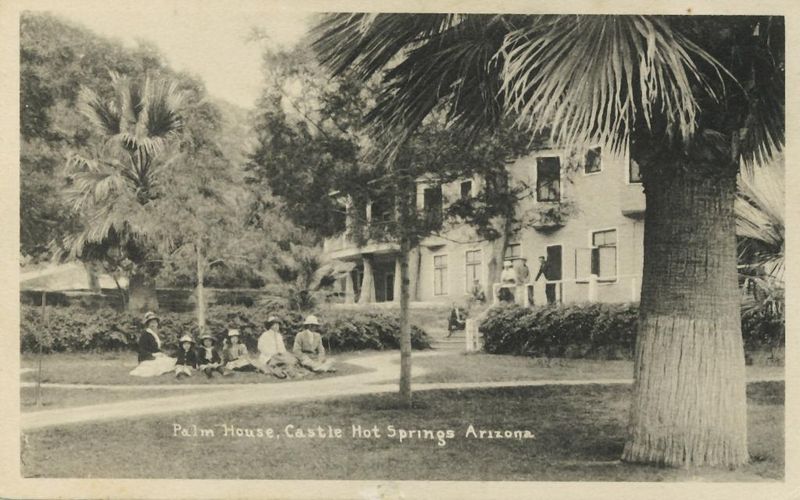
Though decades passed, Castle Hot Springs remained a fixture in local lore. Ownership shifted hands several times as potential buyers considered reviving it.
The property’s remoteness both protected and challenged it, preserving the bones of its architecture while keeping development at bay.
Occasional caretakers maintained the land, ensuring the springs kept flowing and the structures did not collapse entirely.
Visitors who found their way there often spoke of an uncanny feeling, as though the resort existed in two timelines at once, its golden past and its uncertain present. Each season brought renewed speculation about restoration, but no concrete plans ever seemed to hold.
Yet the longer it sat dormant, the more meaningful its potential rebirth became. Castle Hot Springs was asleep, not gone, and Arizona seemed to know it.
What Greets You Today

After decades of silence, Castle Hot Springs was finally reborn. In 2019, following an extensive restoration, the resort reopened with a focus on luxury, sustainability, and connection to the land.
The new design honors its historic roots while offering modern comfort and privacy. Guests now arrive to find palm-lined paths, elegant casitas, and three natural hot springs that still provide the same mineral-rich waters as they did centuries ago.
The atmosphere feels both tranquil and reverent, as if the property remembers its past. Visitors can hike through canyons, enjoy farm-to-table meals, and soak under star-filled skies.
The return of Castle Hot Springs feels like the restoration of something more than a building, it’s the revival of Arizona’s desert magic, woven from silence, sunlight, and second chances.
Why Imagination Keeps Returning
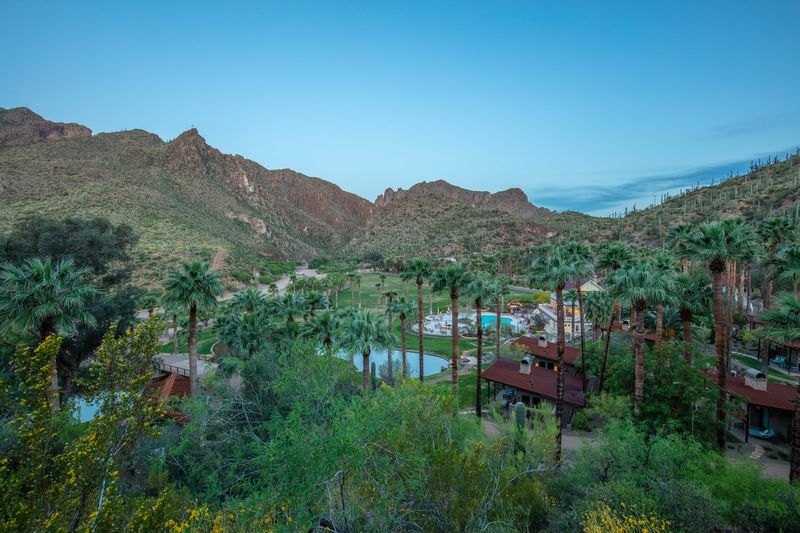
Castle Hot Springs captivates travelers because it blurs the line between legend and reality. It has hosted presidents, war heroes, and honeymooners, each leaving a trace of story behind.
The decades of absence added an aura of mystery that even restoration could not erase. To visit today is to experience both rebirth and remembrance.
The pathways and pools tell a layered story, of fire, ruin, and renewal. Arizona’s wilderness surrounds it with timeless beauty, amplifying the sense that you’ve stepped into history.
Imagination continues to return here because the place itself feels alive with echoes.
It teaches visitors that beauty can fade and return, that silence can hold meaning, and that no place is ever truly lost if people remember it.
Luxury, Hidden in Plain Sight
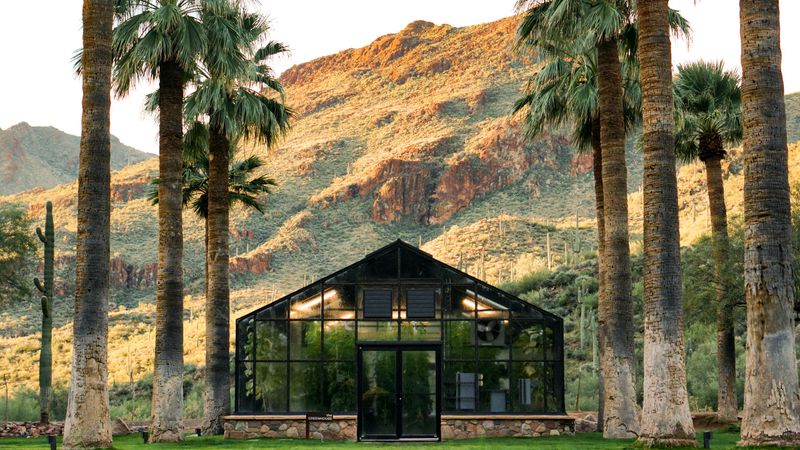
Today, Castle Hot Springs stands as proof that true luxury doesn’t need excess. It thrives in quiet moments, natural textures, and the deep calm that only the desert can offer.
Each suite is crafted to connect guests with the surrounding landscape, from the stone terraces to the open-air soaking tubs fed by the springs.
The architecture draws from the earth, echoing Arizona’s colors and contours. Every sunrise feels like a rediscovery, every night sky a private performance.
The resort’s long dormancy gave it a depth that newer destinations can’t replicate.
Its beauty lies not only in its restoration but in its resilience, the way it weathered fire, isolation, and time, only to return stronger and more serene than before.
Getting There, With Respect for the Land
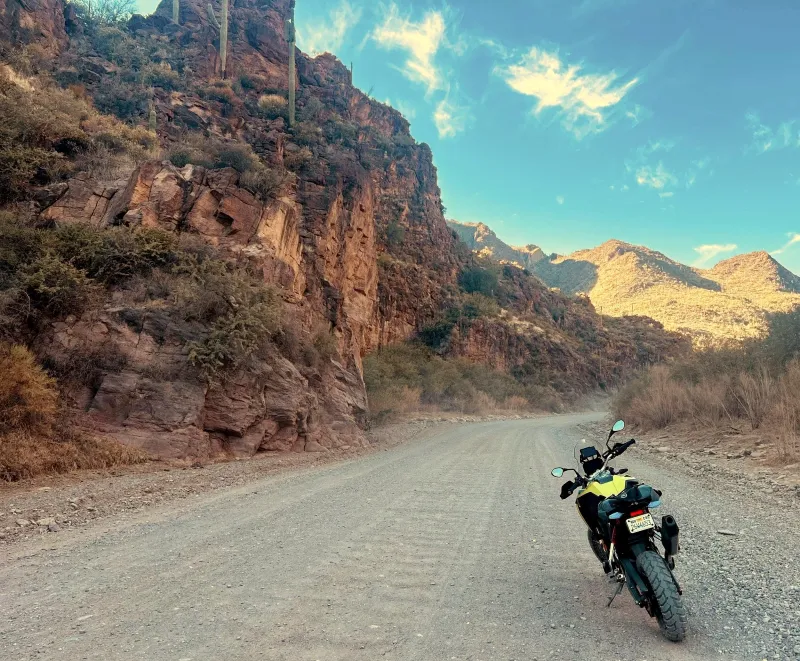
Reaching Castle Hot Springs requires patience and planning, much like it did a century ago. The final stretch of road winds through rugged desert terrain, where gravel and dust test even the most careful drivers.
Modern visitors are encouraged to travel by daylight and follow resort guidance for safe arrival. The journey itself becomes part of the experience, revealing the stark beauty of Arizona’s backcountry.
Along the way, cacti stand like sentinels, and glimpses of wildlife remind travelers that this landscape endures on its own terms.
Respecting the land is central to the resort’s ethos, guests are asked to tread lightly, preserve the quiet, and appreciate the delicate balance between comfort and wilderness that defines Castle Hot Springs’ remarkable setting.
Reading the Past While Enjoying the Present
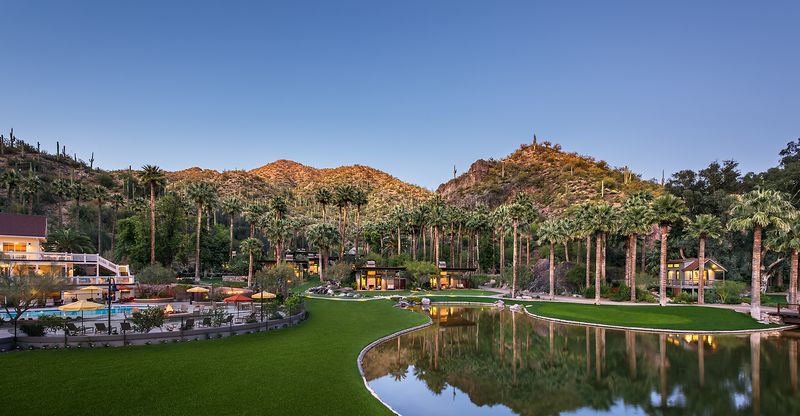
Walking through Castle Hot Springs today feels like turning the pages of a living history book. The restored walls, original foundations, and preserved artifacts offer glimpses of its storied past.
Informational plaques describe its early years as a Gilded Age retreat and its mid-century decline, while modern amenities remind visitors how far it has come.
Guests are encouraged to slow down, listen to the land, and notice how the old and new coexist seamlessly. The mineral springs still flow as they did when Indigenous peoples first used them for healing centuries ago.
To stay here is to participate in that continuity, to feel connected to history while enjoying the comforts of the present.
The silence that once symbolized loss now speaks of endurance, making every visit an act of rediscovery.
Dear Reader: This page may contain affiliate links which may earn a commission if you click through and make a purchase. Our independent journalism is not influenced by any advertiser or commercial initiative unless it is clearly marked as sponsored content. As travel products change, please be sure to reconfirm all details and stay up to date with current events to ensure a safe and successful trip.